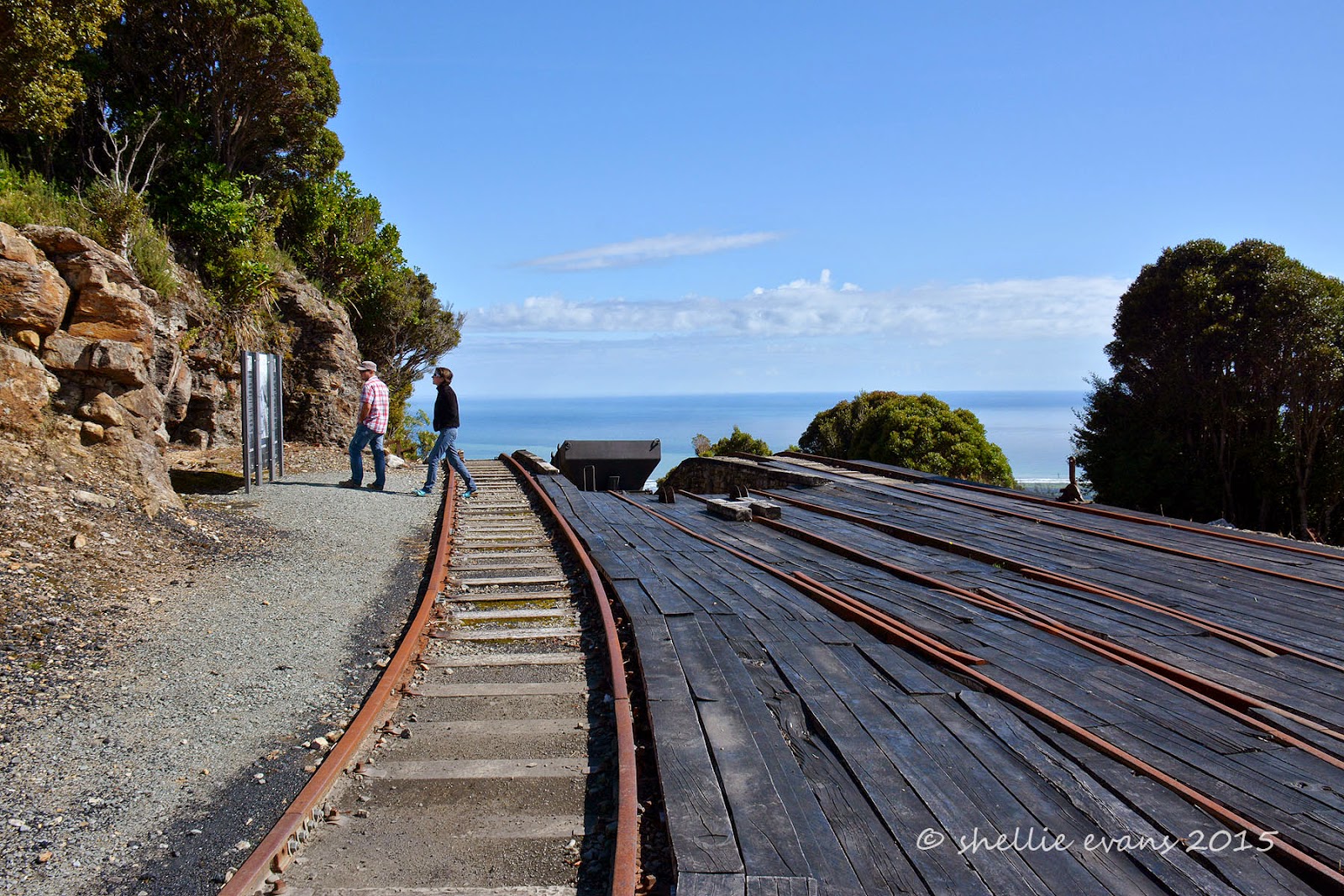The novel, based in the 1880s, is about a young girl, Rose, & her mother who lived in appalling conditions, along with mine workers, in their makeshift collection of huts, tents & saloons in the bleak & isolated coal-mining settlement of Denniston. Denniston is located high up on a plateau where the only access was by a steep bridle path or by riding the coal wagons up and down the terrifyingly steep Denniston Incline. The people in the novel are fiction but the events and conditions are historical facts.
Between 1879 and 1967 the greater Mt Rochford Plateau mines were New Zealand’s largest producing coal mines, producing an estimated 12,600,000 tons of premium quality coal. Once the coal reached the Denniston Plateau it was loaded into railway wagons and lowered by cable down the steep incline railway, the famous “Denniston Incline” (referred to as the eighth wonder of the world by locals) and a remarkable feat of engineering & industrial innovation.
There is now a 9km steep, winding and narrow road to the top of the plateau, a road that is shared by many coal trucks coming and going from the Bathurst Opencast Mine which is located further back on the plateau. The trucks have radio contact with each other and wait patiently for any larger vehicles making the ascent.
I hoped for a fine day. In fact we probably wouldn't have visited if it was anything but a fine day- the view seaward is spectacular and part of the experience. The weather up on the plateau is notoriously bad and it’s often shrouded in mist, fog and cloud, or all three. Then there’s the snow, wind and rain. Luckily we had a gloriously fine day.
While the historic Incline has always been a point of interest, in recent years the Incline area has been upgraded & restored. A path leads visitors past old machinery, mining relics, rail lines, the brake head, hopper wagons and building remains with many informative interpretation panels along the way. The building above was once the workshop, it now houses comprehensive information panels about the lives and times of the people living on the barren & windswept Denniston Plateau. It’s where the start of the self-guided walking tour departs from.
After giving the old mining gear on the top level a cursory glance, I was keen to get down to the Incline level.
And there is was, the view I was waiting to see. Spectacular. The plateau overlooks the coastal plains of the Karamea Bight and the mouth of the Waimangaroa River.
The path led around the brakehead & bin shed area to the Brakehead Shelter(red roof) and to the top of the Bridle Path behind (which has been closed due to major slips). There were more information panels…
…and this interesting ‘look into the past’
And there, finally, was the poem I had been waiting to see. The poem that appears at the beginning of the ‘Denniston Rose’. The poem which had grabbed my attention & imagination and has remained with me. The poem that I copied into a journal and thought I’ll visit there one day. A poem that reflected how tough life was for our early miners & pioneering women.
We approach the top of the Incline.
A Q-class hopper wagon ready to drop.
David doing his Marc Antony speech- ‘Friends, Romans, countrymen lend me your ears’
Looking down the famous Incline, which doesn't actually look too steep from here. But believe me it is. The coal wagons came to a halt in the first white patch (now a carpark) in the valley below. The coal carried on along rails to main railway at Waimangaroa (the settlement at the bottom of the bluff) It was then carted to Westport and loaded into colliers for shipping overseas.
Rather than copy over all the statistics, I took a photo- click to enlarge
Back up on the Brakehead; the information panels have photos of how it looked before and showed a red spot where you would have been standing then. It was fascinating & also hard to imagine the buildings that filled the platform in front of us (click to enlarge) and to think that many of the buildings and houses remained here until the 1980s. Although they stopped using the Incline in the late 1960s- road transport had taken over.
There were a number of old coal wagons made of various materials and in different shapes that had been used over the years.
The Denniston Incline-
then…..
and now
I couldn’t get enough of the wagon about to drop over the incline. To think that many people rode the wagons to the bottom, and quite a few lost their lives doing it too.
To be continued…..Part 2




















We were also there about a month ago, also in fabulous weather, the place oozes a sense of history and special-ness.
ReplyDeleteI just wish the fabulous weather had continued! We're now in parked up in Punakaiki- heavy rain for most of the last 3 days.
DeleteI was also inspired to visit the Denniston Plateau by Jenny Pattrick's book but despite two visits to the West Coast in recent years I still haven't made it up there. Car problems and weather issues mean this is still on my to do list!
ReplyDeleteNever been there but have carted west port coal in the north island to be made into carbonetts in Hamilton Waikato
ReplyDeleteT H Parker thparker82 @gmail.com the coal was landed at Raglan by coastal boats and trucked to Hamilton
Delete